Best 3-Row SUV: New Mazda CX-90 Vs 7 Rivals

We sent out the call. A request to every manufacturer, looking for new, significantly updated, or strong contenders in the mainstream three-row SUV segment. We need the best of best for a special AutoGuide Three-Row SUV Shootout Comparison brought to you by WeatherTech. Our goal: to find the best 3 row SUV.
Quickly, manufacturers responded and entries poured in. Representing Korea are two strong options in the Kia Telluride and Hyundai Palisade. From Japan, we have the usual players, the Honda Pilot, Nissan Pathfinder, Subaru Ascent, and Toyota Highlander.
SEE ALSO: Best Small SUV | Testing (almost) Every Compact SUVAlso, there’s Mazda. The brand was eager to get the tried-and-true CX-9 in our shootout, but what they offered next was huge; both literally and figuratively. Mazda was granting us early access to the brand’s yet unreleased, all-new, CX-90 three-row SUV for this shootout. For those unfamiliar with the CX-90, it’s built on a completely new rear-wheel drive bias platform, featuring an equally new turbocharged inline-six.
Get the Flash Player to see this player.
With a strong field of eight competitors assembled, all that was missing were entries from America and Germany. Volkswagen was onboard to include the Atlas, but the heavily refreshed 2024 model could not be made available in time for our shootout. Just missing the cut as well was the Jeep Grand Cherokee which, in the eleventh hour, couldn’t make it. At General Motors and Ford, no vehicles like the Traverse or Explorer were available at the time of evaluating either.
So, with our field of eight, we headed out on a week of evaluating to see what is the best 3 row SUV. Below we have our findings for each of the eight entries, with the final winner announced at the very end.
Mazda CX-90 3.3 Turbo S Premium Plus
Let’s start with the latest member of the club, the all-new CX-90. Journalists love to sneer at that term, but really, just about everything here is a first for Mazda in North America. The CX-90 rides on a new rear-biased platform—though AWD is of course standard—features a new inline-six cylinder engine, and debuts mild-hybrid and plug-in hybrid powertrains on this side of the Atlantic.
Upmarket styling
Even this exterior paint color is new. It looks pretty darned good, right? Mazda’s current design language is as handsome as ever, and Artisan Red is an appropriately fancy merlot-like color for it. Our entire panel of judges gave the CX-90 top points for exterior styling, liking its just-right amount of flashy chrome, smooth lines, and its classic rear-drive proportions. If I wanted to be nitpicky, I’m not as sold on the squarer headlights compared to the slimmer CX-9 units, or the slightly more anonymous taillights. Those enormous 21-inch wheels sure are pretty, however. They’re the biggest in the test, and come wrapped in the widest rubber.
SEE ALSO: 2024 Mazda CX-90 is an Upmarket Flagship with Plug-In PowerSticking with a theme, the CX-90 goes adventurous inside the cabin, too. A unique fabric covers the dashboard and door cards, mingling with light wood and actual, polished chrome. Mazda took inspiration from a Japanese bookbinding technique here, with a thin line of hanging stitches bisecting the dashboard. We were in a pre-production model, and even this one felt equal parts solid and swanky, with consistently excellent material quality. The light color might not be ideal for a snow-heavy climate, but it does make for an airy-feeling cabin. The CX-90 doesn’t skip out on practicality either, with good storage space in the door bins and second-row center console.
If there’s one thing to nitpick, it’s the thicker cross-section of the new steering wheel and the unusual, knock-it-to-the-side shifter. How quaint. How premium. How very German.
Driver’s Choice
The Bavarian comparison isn’t just aspirational, either. Under the CX-90’s long hood is a silky-smooth 3.3-liter inline-six turbo. This engine produces a test-best 340 horsepower and 369 pound-feet of torque, though it’s also the only one to drink from the premium tap. A lower-power version of this engine produces 280 hp and 332 lb-ft on regular fuel; keep that in mind.
Both setups come with a mild-hybrid system, standard AWD, and an eight-speed transmission. Simply put, this is the best drivetrain of the bunch: powerful in the mid-range, smooth at low speeds thanks to the seamless mild-hybrid setup, and wildly efficient. The CX-90 is quoted at 28 mpg highway (or 8.5 L/100 km for Canadians), but our condensed mixed-use test loop saw 29.4 mpg (8.0 L/100 km). We weren’t able to put the plug-in hybrid model through its paces, but look forward to the chance, as that’s still a rarity in the three-row space.
The Mazda has an easy dynamic edge in this crowd, too. Yes, its curb weight is one of the porkiest here, but the rear-biased setup gives it a composed and sophisticated feel from behind that embiggened wheel. Even in pre-production form, the CX-90 had one of the quietest cabins at a cruise, too. Like the CX-9, the double-digit Mazdaends up feeling smaller than it is, making it easy to place on the road. Also like its sibling, the CX-90’s ride is on the firmer side of the spectrum here, but by no means harsh.
The Achilles’ Heel: Tech
It’s beginning to seem like the new kid’s going to run away with this, right? As impressive as the CX-90 is, its tech suite is where it doesn’t quite feel ready for the prime time luxury scene. Yes, this range-topper comes positively loaded with useful and appreciated tech for this comparo. A head-up display, heated and ventilated seats in the front two rows, a high-res 360-degree camera… you name it, the CX-90 has it, matching those loaded Korean competitors. One well-liked feature is the in-cluster display showing the Mazda’s place in its lane, as well as the other cars on the road.
But the CX-90 is still running Mazda’s current infotainment system. There might be a bigger screen, but the lack of customization and overall features hurts it. And there’s still no native, complete touch functionality, so passengers are shackled to the rotary dial.
Price and Verdict
There is one other area where the CX-90 struggles, at least in this company: price. In the US, it’s a solid eight grand clear of the next-priciest Telluride as-tested, coming in just shy of $62 thousand. Remember that 280-horsepower engine? Yep, it’d save you $7,000, and sacrifice only a few of the fanciest features. The CX-90 is the priciest in Canada too, but by less than a grand over the Pilot.
Overall, the CX-90 makes one seriously strong first impression. Let’s not get ahead of ourselves though, how does the welcoming party all perform? Let’s hand it back to Mike.
Honda Pilot Elite
The box is back. Yes, after the rounded, curvier last-generation Pilot, Honda went back to basics and gave the all-new Pilot a rugged, boxy look once again. We’re big fans of the vehicle’s new look, especially this Black Edition. For our American readers who may be scratching their heads, the Black Edition in Canada is basically the USA spec Elite, with the Sport trim’s blacked-out appearance package. But enough about the Pilot’s looks, is the rest of the SUV just as good? In short, yeah, it is. Here’s why.
SEE ALSO: Toyota 4Runner vs Honda Passport ComparisonHonda is one of the few manufacturers still offering a naturally aspirated V6 in this class. Many have jumped to turbocharged four-cylinders, as these big six-cylinders can feel strained and overwhelmed at times. With the Pilot though, that’s not the case. Honda’s 3.5-liter V6 makes 285 hp, which only puts it about mid pack in this competition. But in real world use, we score it as our second favourite drivetrain. A lot of that has to do with how easy, and smoothly the engine revs. As well, the 10-speed automatic transmission not only has the most gears out of any vehicle here, it’s also one of the smoothest in operation.
Comfort and Space
When it comes to ride comfort, the Pilot once again excels. Receiving top marks in our comparison, the Pilot absorbs bumps with ease, isolates vibrations, and treats all passengers to a pleasant experience. The soft suspension also doesn’t sacrifice handling, which we found to be above average.
With this latest generation Pilot, it seems Honda really has taken a bigger is better approach. This is the second largest vehicle in our test and offers the most passenger and cargo space. In our scoring it ranked second for passenger comfort in both the second and third rows. When it came to cargo carrying ease and flexibility it once again placed second.
Up front, we really appreciate the driving position, which we found to be the best in the test. The interior is laid out in a logical manner, but we would gladly take a few more hard buttons for the infotainment screen controls.
Price and Verdict
Of course, no vehicle is perfect and there are a few things working against the Pilot. For starters, there’s the price. As tested, it’s nearly tied as the second most expensive vehicle on hand. The big, rev happy V6 is also a bit thirsty, with fuel economy figures registering near the back of the back. Finally, when it comes to the interior, we find it cool look and feel a bit more premium, especially when compared to some of the similarly priced competition on hand.
In summary, Honda’s latest SUV isn’t just a great new Pilot, it’s a great new vehicle, period. With good looks, excellent road manners, and impressive passenger space, could it win the whole competition? Or will its price point hold it back? Before we let you know, we have more entries to look at.
Toyota Highlander XSE AWD
When we were distributing the purely objective, on-paper points in this comparison, the Highlander was in the lead. Then we drove it, and found the new turbo engine a great fit for Toyota’s three-row. And yet, once we tallied up the points, the Highlander had tumbled down the standings. That doesn’t make this Toyota bad SUV—it just makes it a compromised one, one that struggles to stand out in such strong competition.
Runt of the litter
All of these SUVs are naturally quite big, but the Highlander is … less so. Toyota’s three-row would be the least-lengthy if not for the extended bumper of this XSE model, ties the Ascent as the narrowest, and is the shortest. We like a tidy footprint as much as the next person, but the Highlander’s dimensions leave it with a comparatively tight interior—one that, in this case, is liberally bathed in very red leather.
We have no problems with the front-row experience, as those rouge seats are supportive and the driving position is typical Toyota comfortable. The issues begin to creep up in the middle row, with an awkward bump in the headliner that’s right at eye level. Then there’s the back row, which can make even reasonably-sized adults feel like Ian from the Simpsons. That the red leather doesn’t even extend to the way-back tells you how much of a priority it is. The upcoming Grand Highlander would have remedied this space-related criticism, but we couldn’t exactly delay this comparison for a few months.
Torquey and fuel-efficient turbo engine
None of our judges had any such qualms with the Highlander’s powertrain. The 2.4-liter turbo has strong mid-range power, and more torque (310 lb-ft) than anything here not wearing a Mazda badge. The eight-speed auto is a good match too, with smooth shifts and quicker responses than the gearbox in the Koreans. This mid-range XSE trim gains an extra level of sporty pretensions too, with the addition of torque vectoring to its AWD system. You probably won’t notice the difference on the local mall run, but nonetheless, the Highlander is one of the more satisfying SUVs to hustle here.
It’s also one of the most fuel-efficient. Officially, the Highlander scores 24 mpg combined (9.9 L/100 km)—nearly matching the highway score of the Koreans. In our real-world test loop, the Highlander did better than all but the CX-90, squeaking past 25 mpg (9.4 L/100 km).
SEE ALSO: 2023 Toyota Highlander First Drive Review: It’s Turbo TimeGood infotainment, but light on features
I’ve said it before and I’ll say it again: Toyota has leapfrogged the competition with its latest infotainment, going from back of the pack to right up front. The revised system is easy to use, with accurate navigation—at least as long as the subscription is active. Smartphone pairing now happens wirelessly, too. Radio explorers will find the lack of a tuning knob frustrating however, and the small 8.0-inch screen does make for some cramped menus, like Sirius XM.
Unfortunately, this mid-grade model comes with one of the lightest equipment lists here. You can get things like a fully digital instrument panel, ventilated seats, and a hands-free liftgate, but a lot of them are locked away in the highest trim. Toyota doesn’t gatekeep its long list of driver assists though, so points for that.
Pricing and Verdict
So what holds the Toyota back? The XSE got hammered for material quality: this lower trim lacks the fancy materials of the others, with a lot of matte black plastic all over. Sure, it’s more affordable than most, but you notice it—more so than in the similarly good-value Nissan. The Highlander’s new infotainment and engine are certainly improvements, but it still feels a half-size smaller in this big comparison.
Kia Telluride SX Prestige X-Line
Kia’s Telluride in a few short years went from unknown quantity to segment standout. The stylish three-row SUV has been a star in a competitive class and this year it received a significant refresh. But nearly everything else here is just as new. Is it still a front runner?
SEE ALSO: 2023 Kia Telluride X-Line ReviewOne of the biggest standouts about the boxy Telluride has been the vehicle’s stylish looks inside and out. With the recent refresh, it’s just as true as ever, even if the cool rectangular amber daytime running lights are now gone. The interior in particular drew a lot of praise for its premium look and feel. The clean look doesn’t affect usability either as most functions can be done with hard buttons scattered around the infotainment screen. Still, there are a few nuances we’d change if we could.
Mixed Bag of Comfort
Front seat comfort ranks about mid-pack while the second-row trails most, mainly due to the overly stiff seating surfaces. Why are the second-row seats in the Telluride less comfortable than the similar Palisade we do not know. The third-row seats in the Kia though ranked quite high as did the Telluride’s cargo capability.
The Telluride’s 3.8-liter V6 engine is the largest in test and one of the most powerful with 291 hp on tap. It’s paired up to a smooth 8-speed automatic transmission. In isolation, this drivetrain operates quite well. But when compared to the competition, it receives some of the lowest marks in our test. The engine feels strained in the lower rpms. At higher revs, the power and response explodes to life. It’s a bit of an all or nothing engine experience. Not helping its case is the slow to respond transmission that takes a moment to downshift when not in Sport mode. Once it kicks down a few gears, the Telluride hustles forward with authority. Overall, the drivetrain lacks the instant torque feel of the Subaru Ascent or the flexibility of the Honda Pilot.
Ride comfort and vehicle response are other areas where the Telluride struggles a bit. The ride can get choppy on broken pavement and the vehicle feels heavier than it is when maneuvering through bends. The Telluride drives like a big SUV, but not quite the truck-like feel we found in the Pathfinder.
Tech and Feature Champ
On the technology front, the Telluride is hard to beat. It’s crammed full of features like blind spot cameras, heated and ventilated seats for the first two rows, head up display, and a fully customizable digital dash. Although we did complain a bit about the infotainment system controls, there’s no denying how well the software works. It’s intuitive, customizable, and straight-forward to set. Is it slightly easier to use in the Telluride’s corporate cousin, the Palisade? Yes, it is. Is it still fantastic in here? That’s also true.
The updates the Telluride received this year should keep it as competitive as ever, but we also feel some of the competition has closed the gap significantly. Add in the Kia’s second highest as test price for this comparison, and the Telluride may be hard pressed to finish on the podium.
Mazda CX-9 Signature
Sharp-eyed readers would have noticed the CX-9 is the odd one out from the beginning. Our criteria included new or recently updated models: the CX-9 is neither. But as the existing (and original) three-row Mazda SUV, we had to bring the CX-9 along to see how it compared to its new sibling, and if it’s still relevant on the market.
Looks Good, Feels Good
Despite the age, the CX-9 is one of the best-looking large SUVs out there. Okay, Soul Red does some of the heavy lifting as the best red on the market. Even looking past that, though, the CX-9 is classically good looking. The elder Mazda has solid proportions, a fuss-free profile, and wide, squinty headlights. Personally, I find the tailgate much more identifiably “Mazda” than the newer SUV, too, with those circular-element taillights. It isn’t perfect: the 20-inch alloys just sort of exist.
The good feelings continue behind the perfect-thickness steering wheel. (Hey, Mazda, this rim in the CX-90, please.) The CX-9 was one of the first three-rows to switch to a turbo-four, and it’s a solid engine with huge torque; only the CX-90 tops it. The six-speed automatic does feel its age, however, not so much with its smooth shifts, but in the higher rpms it’s forced to maintain on the highway.
It’s almost a car reviewer cliche at this point, but yes, the CX-9 has still got The Right Stuff. This being the lightest SUV here, the CX-9 is quick off the line, reliable in highway passing, and good fun to chuck along a winding road. The steering has consistent weight and feedback, making the CX-9 shrink around the driver. Is this a genuinely fun-to-drive large SUV? Yes.
SEE ALSO: Nissan Pathfinder vs Mazda CX-9 ComparisonTight Cabin, Limited Tech
Okay, large is kind of pushing it. The CX-9 might be one of the lengthiest rides here, and like everything else except the CX-90, it sits atop a front-biased platform. Yet everywhere you sit, the elder Mazda feels snug. The chunky center console up front gives it a distinct cockpit feel, very different from the airier CX-90, but it can feel tighter for taller folks. We all gave the CX-9 solid marks for the middle row too, featuring comfy captain’s chairs and above-average leg- and headroom.
The third row is amongst the tightest of the bunch. Adults don’t really sit back here: they’re installed. There aren’t a lot of creature comforts in the way-back, either.
Where the elder Mazda also falters is its feature list and refinement. There’s buzz from the drivetrain, and as mentioned before, the six-speed can’t keep up with the newer transmissions here. You’re missing out on the gaggle of charge ports and cupholders in the others, to say nothing of fancier features like a digital instrument cluster. While the CX-9 does have a 360 camera, it’s grainy and permanently over-exposed. We still find Mazda’s super-simple infotainment more frustrating than freeing, too.
Still Holds Appeal
There are two questions we needed to answer with the CX-9: is this package still competitive in the segment, and does it justify its existence aside its newer, double-digit sibling? Turns out the answer is “yes”: this is still a satisfying SUV, especially if you value style and driving dynamics. It’s affordable too, and a wholly different experience to the luxury brand-chasing CX-90. Could we see a finishing order upset?
Subaru Ascent Touring
Subaru’s Ascent is the no-nonsense vehicle of the three-row SUV world. It’s designed to excel at its intended job without any excessive flash or flair. Shuttling seven or eight passengers from point A to point B, regardless of weather or road conditions, is the Ascent’s operational directive. But this year, it’s gained a bit more personality as Subaru looks to expand the vehicle’s appeal.
SEE ALSO: 2023 Subaru Ascent First Drive ReviewFor 2023 Subaru has given the Ascent a refresh inside and out. The most notable changes are a larger infotainment screen on higher end trim levels and the revised front-end styling. So conservative was the original Ascent’s styling, it was easily confused for other vehicles on the road. With the new Ascent’s look, that should no longer be the case. The overly exaggerated grille and front chrome nostrils make it more distinct, for better or worse.
Still a Smooth, All-Weather Operator
Unchanged is the Ascent’s drivetrain, which continues to use a 260 hp 2.4-liter turbocharged four-cylinder paired to a continuously variable automatic transmission. Despite the countless CVT detractors, in practice, this drivetrain just works. Is it noisy? It can be. But, even with the second lowest horsepower rating, the Ascent’s accelertion is very responsive. After the scores were tallied, we ranked the engine/transmission combo third best in test.
Also receiving a lot of praise is ride comfort which places second in test. The best part is that it doesn’t overtly affect handling which still ranks in the upper half of the test. And of course, how can we discuss a Subaru without mentioning its all-weather capabilities. Even though every vehicle on-hand is equipped with all-wheel drive, and most have various drive modes for slippery conditions, when a sudden snowstorm hit during this comparison, most were seeking out the Ascent.
Easy to See, Easy to Drive
Inside, the good news continues as the Ascent provides one of the best driver vantage points. As is a Subaru specialty, sight-lines are terrific all-around. We all agree that the Ascent is probably the easiest vehicle to drive in this comparison. All the controls are light, responsive, and do exactly what the driver intends them to.
Secondary controls for things like the climate control and radio are just as easy to find, but the infotainment may take a moment to get used to. Less impressive though is the front seat itself which scored near the back of the pack in terms of comfort. It’s a similar story for the second and third rows as well, which trailed most in terms of seat comfort and space.
Still More Utilitarian, Less Premium
Even after the refresh, the Ascent still lacks the premium feel of many of the competitors on hand here. Everything is laid out in a logical fashion throughout the cabin, but the design and materials trail much of the competition. It’s still the no nonsense, function over form interior that does appeal to some, but not to others.
Subaru has aggressively priced the Ascent as it’s one of the more affordable options on hand here, but still features plenty of content like ventilated front seats, a panoramic sunroof, and a driver distraction mitigation system. It is missing wireless phone charging though.
Overall, the Ascent offers a lot for consumers looking for all-weather, multi-person transportation. The question is, will its lack of refinement and desirability keep it off the podium here?
Hyundai Palisade Calligraphy AWD
The Palisade, and its corporate cousin the Telluride, both rolled into the new year as the three-rows to beat, with a fresh round of updates to keep them in fighting form. This Palisade Calligraphy (or Ultimate Calligraphy here in the land of Tim Hortons), is as fancy as they come. Are these choice upgrades enough to hold onto the crown?
One Fancy-Pants Interior
As is pretty typical these days, Hyundai has elected to fit larger screens in the Palisade as part of its refresh. There’s one 12.3-inch unit behind the wheel and another atop the dashboard, both highly customizable and legible. Both Apple CarPlay and Android Auto are wired-only affairs, however, which feels increasingly old-hat even in the mainstream scene. Crucially, Hyundai has kept the big physical dials and buttons below the touchscreen, so it’s easy to move through screens on muscle memory alone. The semi-floating center console offers up a solid amount of storage space below, too.
This is still one of the very best interiors out there, easily shaming many so-called premium brands. The Nappa leather seating is super soft, the pinstripe dashboard is the right level of classy, and the Alcantara headliner is a thoughtful touch. There’s such a swanky atmosphere here, one lit with just the right amount of color-adjustable ambient lighting.
Tech Powerhouse
The driver seat now is now of the Ergo Motion variety, a sort of quasi-massage throne borrowed from Genesis. Every so often, Ergo Motion uses inflatable pouches within the seat to subtly stretches your muscles and reduce fatigue. It will also gently hug your torso in Sport mode, because why not?
The Palisade led the pack on overall interior comfort, coming in second to the Pilot for the front seats, but topping the charts for the other two rows. Every seat is comfortable and spacious, with added practicality thanks to charge ports and ample storage. The Hyundai is also the only car here with power-folding (and raising) third-row seats.
That’s just the tip of the tech iceberg, too. There’s a big, clear head-up display, Hyundai’s always-clever Blind Spot View Monitor, and a robust safety suite with advanced adaptive cruise control. Even the sound system is great. Hyundai has added a digital key function as well, allowing folks to use their phone instead. There’s a consistent feeling of tech being included to make the day-to-day process easier.
SEE ALSO: 2023 Hyundai Palisade Calligraphy ReviewAging Powertrain
It’s almost sounding too good to be true, right? The Palisade’s lone drivetrain option is its biggest weak point. The 3.8-liter V6’s 291 horsepower ain’t nothing to sneeze at, but it needs to be posting high revs to really unlock the power, and especially the torque. Even when we drop the hammer, the eight-speed takes a gingerly approach to downshifts. This middling performance isn’t even balanced with good fuel economy, either: the Hyundai and Kia are the two thirstiest vehicles here.
The Palisade works best when you lean into its big cruiser personality. The suspension is set up for cushy comfortableness: the Palisade does not like to be hustled, and honestly, with the super-high-up driving position, you wouldn’t either.
Styling and Verdict
Another aspect where the Palisade posted losses was the (admittedly subjective) subject of looks. Our judges scored the big H near the back of the pack: it’s a little too blingy, and lower trims’ all-black approach feels played out, too. The Palisade now aligns more closely with the rest of Hyundai’s SUV and truck line, but we’re not sold on how necessary that was.
While the two models are very different, the Palisade and CX-90 are both asking the same question. Do you really need to spend thousands more on those so-called premium brands, when you can get all the comfort and features here? Sure, this was a fairly minor refresh, but the Palisade didn’t need much work done. Can its good value, test-leading feature list and comfy, capacious cabin overcome that shrug-inducing drivetrain?
Nissan Pathfinder Rock Creek
The Pathfinder is a bit of an anomaly in this comparison. While most manufacturers sent us fully loaded trims with all the latest technology, and price tags to match, Nissan loaned us the Pathfinder Rock Creek. It’s a mid-trim model that oozes charisma and features a lower price point than anything else in this shootout.
SEE ALSO: 2023 Nissan Pathfinder Rock Creek ReviewThe Rock Creek is a familiar name to the Nissan faithful as it signifies a more rugged version of the brand’s popular three-row SUV. With the latest Pathfinder, this is still true. It receives Rock Creek badging everywhere, a revised look up front, more aggressive wheels and tires, as well as the tubular roof rail system. It also has increased ground clearance. but even at the raised 7.7 inches, it’s still one of the lower vehicles in this group.
It’s Got the Look and Space, But Not the Features
We really like this look, especially painted in Baja Brown like our test vehicle. It standouts in a crowd of look-alike SUVs and adds some real personality. Inside, orange stitching and multiple embroidered Rock Creek badges can be found, but it’s not quite enough to liven up the interior. The design is basic, and a bit drab. But at least it’s very functional. There’s large knobs and buttons for most controls making the Pathfinder very user friendly.
Passenger space and comfort are other strong points for the Pathfinder, at least when it comes to the front two rows. Both score in the upper half of this group and this second-row seat has the most space by far. Part of that has to do with the lack of any kind of sunroof. To make the Rock Creek look so cool, yet also be affordable, money had to be saved elsewhere.
This is the least equipped vehicle on hand, and lacks items like heated rear seats, a power passenger seat, navigation, and wireless phone charging. In the USA, there isn’t even a power lift gate which we find to be a big omission, even on a lower priced trim like this.
More of a True SUV
Under the hood the Rock Creek does have another trick up its sleeve. The 3.5-liter V6 found in all Pathfinders receives a minor power boost, up to 295 horsepower total, which is the second most in our test. Partnered up with a new nine-speed automatic transmission, we are divided on the drivetrain. Some of use really like the ample power that’s available at nearly every speed, while others find the engine to be a bit coarse.
It was a similar story with the ride comfort. Most found it to be one of the better riding vehicles while others found it choppy. When it comes to handling though, we all agree that the Pathfinder is one of the more truck-like vehicles to drive. It has more of a traditional SUV feel behind the wheel than anything else in this comparison.
The Pathfinder Rock Creek is a niche vehicle, but still a really compelling one. It appeals to those who want a multi-passenger vehicle with a bit more personality. It probably won’t be the winner of this comparison, but for a certain type of consumer, it’s exactly what they’re looking for.
And The Winner Is…
After all the testing was completed and we added up all the scores, the results were close. Every vehicle scored within 10 percent of each other and the top two were separated by a fraction of a point. Now then, onto the podium finishers.
3rd Place: Coming in a comfortable third place is the Honda Pilot. Spacious, comfortable, and with excellent road manners, the new Pilot has built on the old model’s strengths and improved its weaknesses. If it were a bit lowered priced, it might have come away with the overall victory.
2nd Place: The other newcomer scores a silver finish here. Mazda’s third double-digit model is its biggest swing yet, and the company has hit a home run. The CX-90 is a truly impressive three-row SUV, one absolutely capable of taking on the established luxury brands. That comes with a price to match, however—at least in the US. Had this been the lower-power engine option, the CX-90 would have won outright. In Canada, the pricing is much closer, and the CX-90 is the easy choice there. This is the best car here, so long as you’re willing to pay to play.
1st Place: And that brings us to the overall winner of the AutoGuide Three-Row SUV Shootout Comparison brought to you by WeatherTech. As Kyle mentioned, the CX-90 is the best overall vehicle here, but when it comes to the best overall value for consumers, the Hyundai Palisade takes the crown. It’s feature-packed, easy to operate, spacious, and feels premium. But this wasn’t as decisive as it once was for Hyundai, as the competition continues to improve. But for now, the Palisade remains the best 3 row SUV.
Become an AutoGuide insider. Get the latest from the automotive world first by subscribing to our newsletter here.

A 20+ year industry veteran, Mike rejoins the AutoGuide team as the Managing Editor. He started his career at a young age working at dealerships, car rentals, and used car advertisers. He then found his true passion, automotive writing. After contributing to multiple websites for several years, he spent the next six years working at the head office of an automotive OEM, before returning back to the field he loves. He is a member of the Automobile Journalists Association of Canada (AJAC), and Midwest Automotive Media Association (MAMA). He's the recipient of a feature writing of the year award and multiple video of the year awards.
More by Mike Schlee
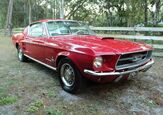
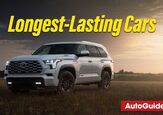

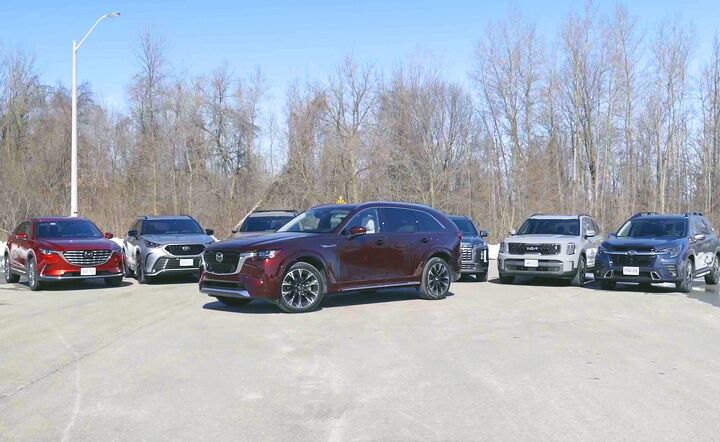
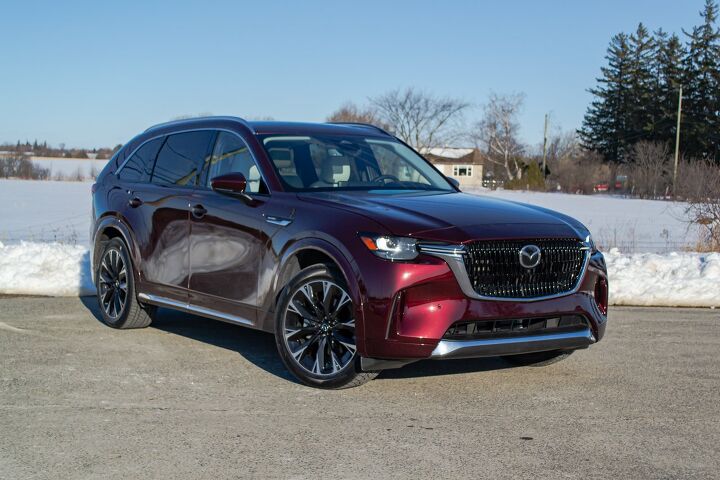
















































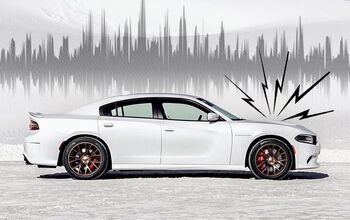


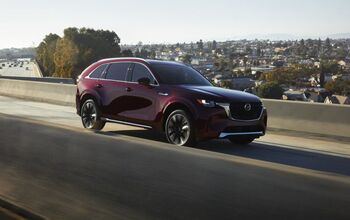
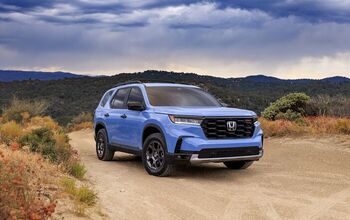
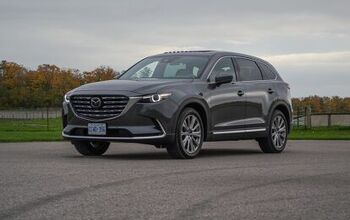
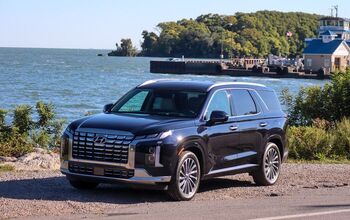
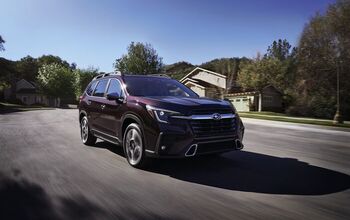










Comments
Join the conversation
Warranty information would be a good pricing point when designating a winner here, someone who really stands behind their brand is a huge plus when spending as much for these new Suv's and what you get. Lets not forget the MSRP gut punch you get when trying to buy a new Kia Telluride, MSRP might be 62k and then they add a hefty 4-6k over the top non negotiable to the price. That should make Kia's entry top tier SUV plunge right down to 1976 Ford pinto blowup specials. I own a 2023 Calligraphy and the only problems I am having so far is figuring out what all those buttons and info screens do for me, because there are tons of options to choose from. That and the fact Hyundia didn't use power folding mirrors, no grab handle to assist you in on the drivers side is a total brain dead mistake. The center console under bin storage is laughable while trying to retrieve or access anything stored there.
"Adults don’t really sit back here: they’re installed." Funny.